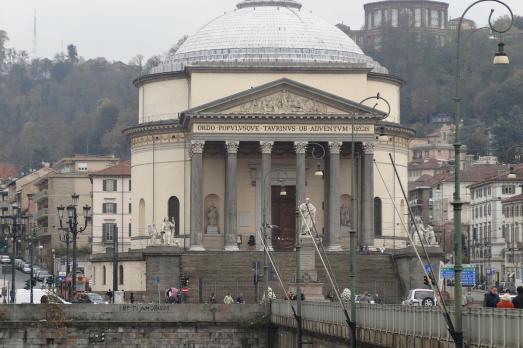
Chiesa della Gran Madre di Dio (Torino)
Turin, IT
The church of the Gran Madre di Dio, which imitates the Pantheon in a neoclassical-Hadrian style, was completed in 1831 by the architect Ferdinando Bonsignore.
Here you can search for a building to visit. You can use the map find destinations, or you can use the filters to search for a building based upon what different criteria.

Turin, IT
The church of the Gran Madre di Dio, which imitates the Pantheon in a neoclassical-Hadrian style, was completed in 1831 by the architect Ferdinando Bonsignore.
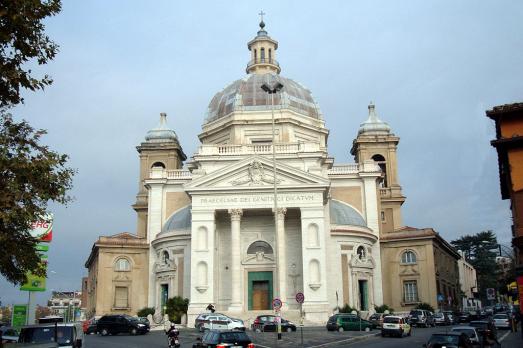
Roma, IT
The Church of the Great Mother of God is a monumental church that was commissioned by Pope Pius XI in 1931 to commemorate the 15th centenary of the Council of Ephesus (431). It was built between 1931 and 1933 to a design by the architect Cesare Bazzani, executed by Clemente Busiri Vici, and consecrated in 1937 by Bishop Francesco Beretti.
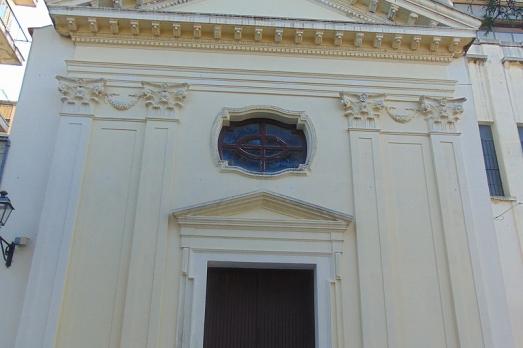
Catanzaro, IT
The Church of the Maddalena dates from the 16th century. In 1784, the church and the adjacent convent were closed by royal decree and reopened in 1796, when the parish of San Biagio was moved inside. The building was again closed to worship on 29 November 1810 but reopened after the French decade (1805-1814). The neoclassical facade has pairs of pilasters in Corinthian order, from which a very high entablature rises, ending in a pronounced tympanum.
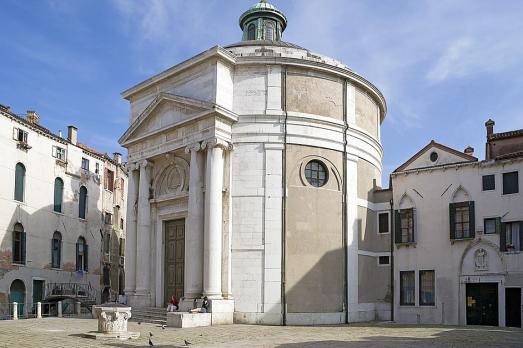
Venezia, IT
The church of Santa Maria Maddalena, usually called La Maddalena, was built between 1763 and 1790 on an old medieval church. The new neoclassical church was built on a circular plan, according to the design of Tommaso Temanza. The work was completed in 1790 under the direction of Giannantonio Selva. In 1888 the bell tower, which was already unsafe, was pulled down.
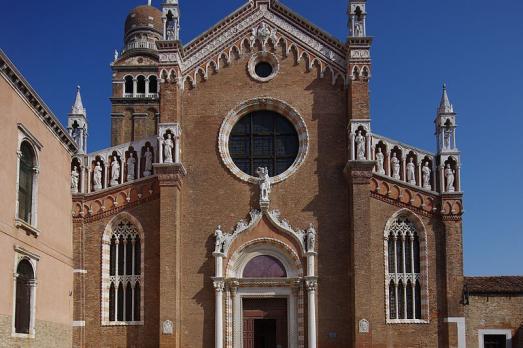
Venezia, IT
The church of Madonna dell'Orto was founded in the 14th century by the Humiliati order with a monastery. In 1377 a Gothic church was built with donations; the occasion was the transfer of a miraculous statue of the Madonna, which had been found in a nearby garden. The church itself was completed around 1400, but the facade was not finished until 1460-1464. After the expulsion of the Humiliati, the monastery passed to the Canons Regular of San Giorgio in Alga. After their dissolution in 1669, it was acquired by the Cistercian monks who remained there until the end of the Republic in 1797.
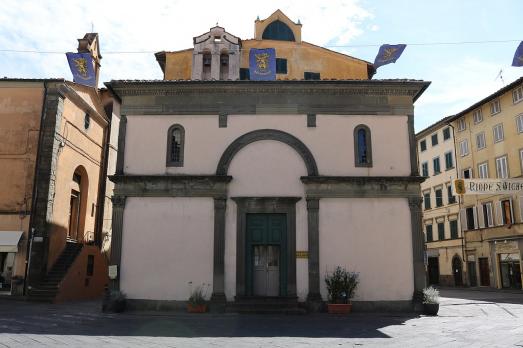
Pescia, IT
The church of the Madonna di Piè di Piazza was built in 1447, possibly to a design by Andrea Cavalcanti, known as Buggiano. It is characterised by a system of large arches that interrupt the high entablature on three sides and present the Serlian motif. Most of the original stone elements have disappeared; the pillars, cornices, corbels and friezes visible today are in fact the result of replacement restorations carried out by workers active in the 1920s and 1940s.
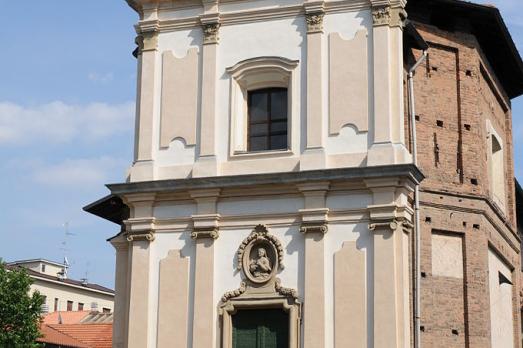
Legnano, IT
The church of the Madonnina dei Ronchi is an octagonal church that was built during the Counter-Reformation. In order to build this new place of worship, a pre-sixteenth-century oratory chapel along Corso Sempione, at the corner of today's Via dei Ronchi, was transformed into a real church. The church of the Madonnina dei Ronchi was designed by Francesco Maria Richini. This religious building is reminiscent of the church of San Giuseppe in Milan, also designed by Richini.
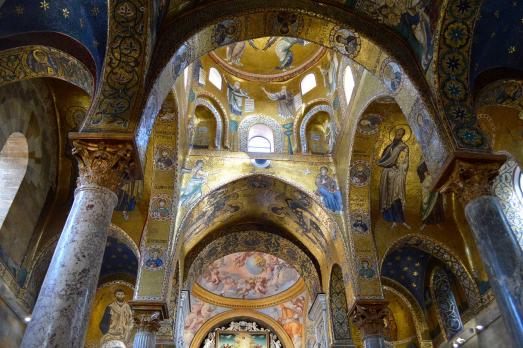
Palermo, IT
The Martorana or Santa Maria dell'Ammiraglio was built in the 12th century in the Arab-Norman style. Despite numerous restructuring and renovation, the Martorana is known for having incredibly well preserved 12th-century Byzantine mosaics. It is a UNESCO World Cultural Heritage site since 2015.
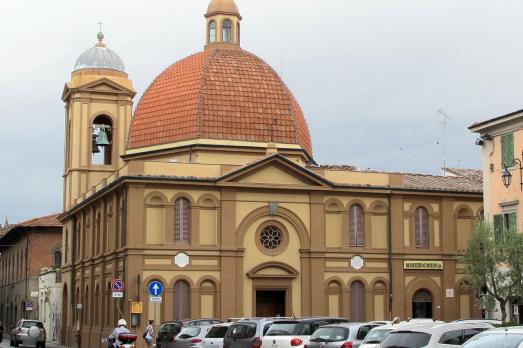
Pontedera, IT
The Church of the Misericordia was built between 1883 and 1892. It is characterised by a poly-lobed central plan, with a domed roof, and two small rectangular chapels stand on either side of the single entrance. The interior is divided into five semicircular chapels; along the walls of the first chapel is the Stations of the Cross, while the next chapel contains two 19th-century altars made of gilded wood and painted in a light Renaissance style.

Venezia, IT
The church of the Pietà was built in its present form between 1745 and 1760 to a design by Giorgio Massari (1687-1766). However, the façade remained unfinished until the beginning of the 20th century: it was not until 1906 that the work was completed according to the original project, the only change being the upper ornamentation. The previous building, destroyed by the deterioration of time, was located on the right side of the present church.

new
Nestled amidst the serene landscapes of the Harz region, lies a hidden gem for nature enthusiasts and history buffs alike - the Harz Monastery Hiking Trail. Lace up your hiking boots and embark on this captivating adventure that will transport you back in time.

The Holy Mile (Miglio Sacro) of Naples is a one-mile-long itinerary, through sacred places linked to the city's patron saint, San Gennaro, in the Rione Sanità district. Discover the city from a new perspective with this unique walking tour.

As a university city, cultural offerings abound in Tartu and will reach their peak after being designated one of three European Capitals of Culture for 2024. In this list, we've compiled the most interesting sacred places to visit in and around the old town.